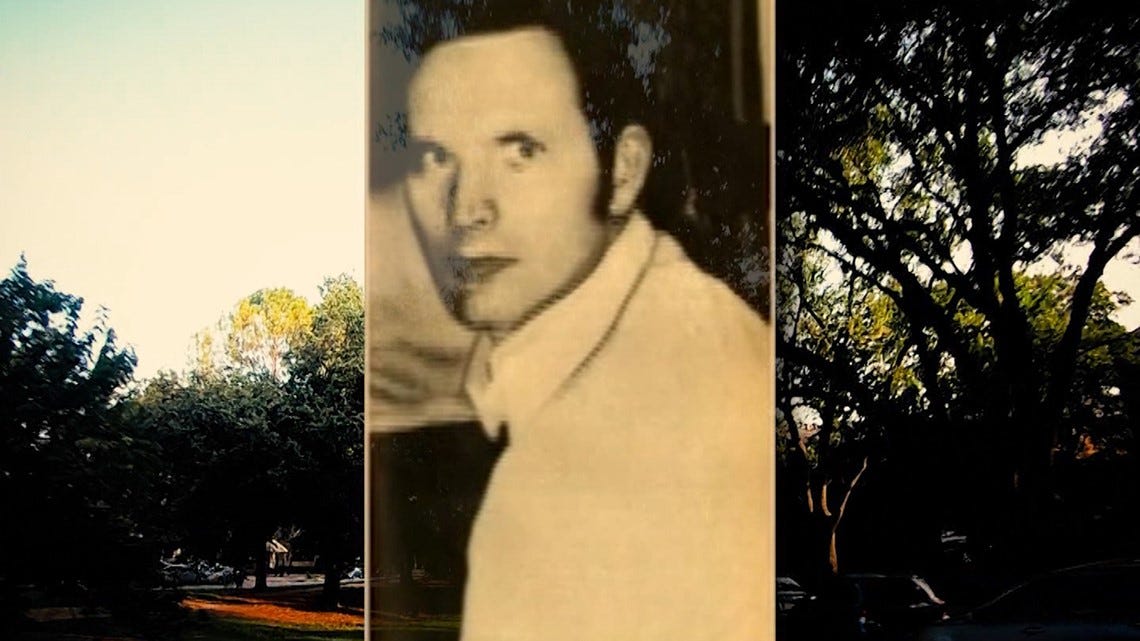Dean Corll: The Candyman of Houston – A Chilling Legacy of Horror
Dean Corll terrorized Houston…
🕯️ Dean Corll: The Candyman of Houston – A Chilling Legacy of Horror
🎭 The Facade of Normalcy
To many in Houston during the late 1960s and early 1970s, Dean Corll appeared to be an unassuming and even likable man. Born on December 24, 1939, in Fort Wayne, Indiana, Corll later relocated to Texas where he worked at his family’s small candy manufacturing business, Corll Candy Company. He earned the nickname “The Candyman” because he often handed out free candy to neighborhood children. To parents and children alike, he seemed generous, kind-hearted, and trustworthy. 🍭
But behind this friendly demeanor was a monster in disguise. While his outward persona suggested nothing but goodwill, Dean Corll was using his access and charm to build relationships with vulnerable boys, especially those from lower-income or unstable homes. He was not just a predator; he was a manipulator and a groomer, who weaponized kindness and sweets to lure in victims. In hindsight, the warning signs were subtle but there — and the horror was just beginning. 😨
🧑🤝🧑 The Accomplices: David Brooks and Elmer Wayne Henley
Dean Corll's sickening campaign of violence would not have reached its terrifying scale without the help of two teenage boys: David Owen Brooks and Elmer Wayne Henley Jr. Brooks, who had met Corll when he was just 12 years old, was soon taken under his wing. Corll acted as a father figure, buying him gifts and giving him money. Eventually, Brooks began recruiting boys for Corll, telling them they were headed to parties or offering rides. 😟
Elmer Wayne Henley Jr. joined a bit later, at first unaware of the murders. Corll initially tried to lure Henley as a victim but changed his mind and instead invited him into the circle. Henley would later claim he joined because his family needed the money. Over time, he too became a recruiter and eventually a direct participant in the killings. Both teenagers were rewarded with cash, drugs, and status, as Corll transformed them into pawns in his nightmarish game. The sheer manipulation and psychological control he held over them is still studied today. 🧠🧌
🕳️ The Discovery of the Crimes
The horrors finally ended on August 8, 1973, in a shocking act of desperation and survival. Henley had brought two friends—a boy named Timothy Kerley and a girl named Rhonda Williams—to Corll’s Pasadena home for what was supposed to be a party. When Corll flew into a rage for bringing a girl, he tied all three teens up at gunpoint and threatened to kill them. In a stunning reversal, Henley convinced Corll to untie him—then grabbed Corll’s pistol and shot him six times, killing him on the spot. 🧨🔫
Afterward, Henley called police and confessed everything. Investigators were initially skeptical—until he led them to a rented boat shed. There, they unearthed the first of many shallow graves. What began as a shocking murder evolved into the largest serial murder case in U.S. history at the time. Police discovered more graves at Lake Sam Rayburn and High Island Beach. With each new grave uncovered, a horrifying picture emerged of the torture, rape, and murder of boys—most between 13 and 20 years old. ⚰️🕵️♂️
⚖️ The Aftermath and Trials
Both Henley and Brooks were arrested and put on trial for their roles in the mass murders. In 1974, Henley was convicted of six murders and sentenced to 594 years in prison. He has since been denied parole multiple times. Brooks, more quiet and reserved during his trial, was convicted in 1975 of one murder and given a life sentence. He died in prison in 2020. While Corll escaped earthly justice, his accomplices paid the price with their lives behind bars. ⚖️⛓️
Public reaction was a mix of horror and disbelief. The city of Houston, particularly the Heights neighborhood where many of the victims were abducted, was in mourning. Many families were angered by how long it took authorities to connect the missing boys. Some had even been dismissed by police when reporting their sons missing—told they had probably just run away. The sense of betrayal ran deep, and community trust in law enforcement was shaken to its core. 😔💔
🧩 The Unidentified Victim
Despite massive investigative efforts over decades, one victim—discovered in Corll’s boat shed in 1973—remains unidentified. Known only as “John Doe 1973,” his remains have been the focus of numerous reconstructions and DNA analysis efforts. In 2023, the National Center for Missing & Exploited Children released a new facial reconstructionwith updated forensic artistry, hoping someone might recognize the boy and bring closure to his family. 🧬🧑🎨
John Doe 1973 represents not just a forensic puzzle, but a symbol of unfinished justice. His unidentified status is a painful reminder that even in the wake of the Candyman’s exposure, not every question has been answered. Each attempt to identify him keeps the public’s attention on the victims rather than glorifying the killer, and reinforces that every lost boy deserves a name and a story remembered. 🕯️🧑🚀
🕊️ Remembering the Victims
The victims of Dean Corll, sometimes referred to as “Houston’s Lost Boys,” were real children with families, dreams, and futures. Many were runaways or came from troubled homes, making them particularly vulnerable. Corll targeted boys who wouldn't be missed quickly, and that vulnerability was used against them. Each boy was brutally tortured and murdered, and most were buried in secret graves across Houston. 🧒⚰️
Their stories were once lost in the sensational headlines, but that is beginning to change. Documentaries, memorial murals, and even podcasts now focus on telling the boys’ stories rather than solely discussing Corll’s depravity. Memorial efforts have been made to honor them by name and face. Remembering these victims not only offers solace to families but also shines a spotlight on how systems failed them and how such evil was allowed to fester in plain sight. 🌹🕯️
💔 Final Thoughts
Dean Corll wasn’t a monster in the woods or a ghost story passed around a campfire—he was a real man living among neighbors, running a candy business, and masking unspeakable evil. 🧟♂️ The tragedy of his victims, and the failure of systems to catch him sooner, remain an indelible stain on Texas history.
By learning about these cases and honoring the victims, we send a clear message: we remember, we care, and we will never forget. ✊🕊️




